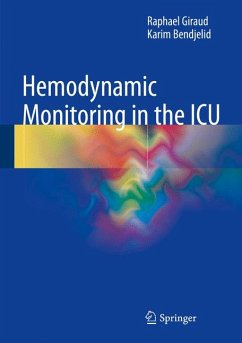
The Organization of Critical Care (eBook, PDF)
An Evidence-Based Approach to Improving Quality
Redaktion: Scales, Damon C.; Rubenfeld, Gordon D.
Versandkostenfrei!
Sofort per Download lieferbar
72,95 €
inkl. MwSt.
Weitere Ausgaben:

PAYBACK Punkte
36 °P sammeln!
The origin of modern intensive care units (ICUs) has frequently been attributed to the widespread provision of mechanical ventilation within dedicated hospital areas during the 1952 Copenhagen polio epidemic. However, modern ICUs have developed to treat or monitor patients who have any severe, life-threatening disease or injury. These patients receive specialized care and vital organ assistance such as mechanical ventilation, cardiovascular support, or hemodialysis. ICU patients now typically occupy approximately 10% of inpatient acute care beds, yet the structure and organization of these ICU...
The origin of modern intensive care units (ICUs) has frequently been attributed to the widespread provision of mechanical ventilation within dedicated hospital areas during the 1952 Copenhagen polio epidemic. However, modern ICUs have developed to treat or monitor patients who have any severe, life-threatening disease or injury. These patients receive specialized care and vital organ assistance such as mechanical ventilation, cardiovascular support, or hemodialysis. ICU patients now typically occupy approximately 10% of inpatient acute care beds, yet the structure and organization of these ICUs can be quite different across hospitals. In The Organization of Critical Care: An Evidence-Based Approach to Improving Quality, leaders provide a concise, evidence-based review of ICU organizational factors that have been associated with improved patient (or other) outcomes. The topics covered are grouped according to four broad domains: (1) the organization, structure, and staffing of an ICU; (2) organizational approaches to improving quality of care in an ICU; (3) integrating ICU care with other healthcare provided within the hospital and across the broader healthcare system; and (4) international perspectives on critical care delivery. Each chapter summarizes a different aspect of ICU organization and targets individual clinicians and healthcare decision makers. A long overdue contribution to the field, The Organization of Critical Care: An Evidence-Based Approach to Improving Quality is an indispensable guide for all clinicians and health administrators concerned with achieving state-of-the-art outcomes for intensive care.
Dieser Download kann aus rechtlichen Gründen nur mit Rechnungsadresse in A, B, BG, CY, CZ, D, DK, EW, E, FIN, F, GR, HR, H, IRL, I, LT, L, LR, M, NL, PL, P, R, S, SLO, SK ausgeliefert werden.












